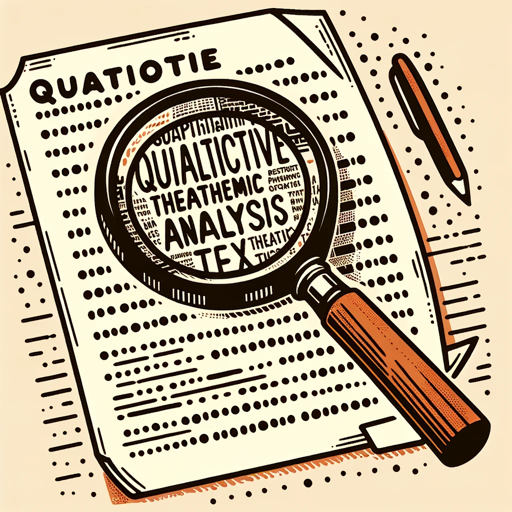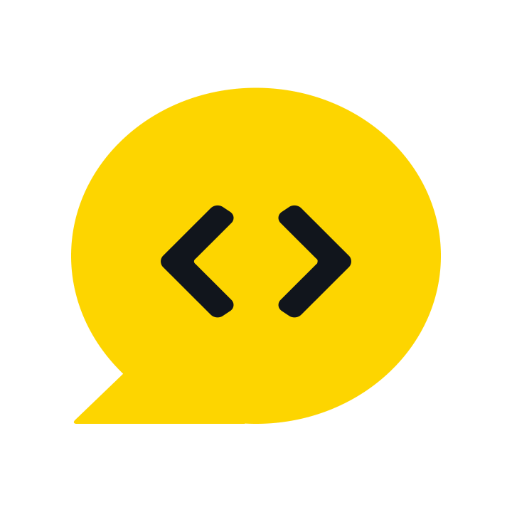Qualitative Interview Analyst-Qualitative Interview Processing
AI-powered tool for qualitative analysis
Related Tools
Load More
Qualitative Research Data Analysis
Expert in thematic analysis, identifies themes in transcripts, provides detailed theme info.

Qualitative Researcher
Expert in qualitative research and document analysis.

Technical Interviewer (by interviewing.io)
I simulate FAANG technical interviews (both algorithmic & system design). Made with love by interviewing.io.

Interview Coach
Interview coach provides practice interview and mock interview feedback

Interviewer for Japanese
日本企業の面接官です。あなたの合否を判定します。企業名/職種/新卒or中途 を始めに入力してください。

Qualitative Insights
A qualitative analysis assistant surpassing NVivo and MAXQDA in capabilities.
20.0 / 5 (200 votes)
Introduction to Qualitative Interview Analyst
Qualitative Interview Analyst is a specialized tool designed to assist in the processing and analysis of qualitative interview transcripts. Developed by Adam Matossian, a CX researcher, this tool aims to streamline the synthesis of interview data, making it easier for researchers to extract meaningful insights from their conversations with participants. The tool functions by transforming raw interview transcripts into structured summaries that retain the tone, voice, and sentiment of both the moderator and participant. This ensures that the nuances of the conversation are preserved while providing a clear and concise output. For instance, in a scenario where a researcher has conducted multiple in-depth interviews, the Qualitative Interview Analyst can help by breaking down each transcript into summarized questions and synthesized responses, making the data more manageable and easier to analyze.

Main Functions of Qualitative Interview Analyst
Transcript Processing
Example
A researcher submits a raw interview transcript. The tool identifies the questions asked by the moderator and the corresponding responses from the participant.
Scenario
An academic researcher conducting a study on consumer behavior can use this function to process several interview transcripts, ensuring each is clearly structured with questions and answers neatly separated.
Question and Answer Summarization
Example
The tool summarizes the moderator's questions while synthesizing the participant's responses to maintain their original tone and sentiment.
Scenario
A market researcher can use this function to create a summarized version of a focus group discussion, highlighting key questions and responses while preserving the authenticity of participants' answers.
Thematic Analysis
Example
After processing transcripts, the tool can generate a one-page summary that distills core themes, impactful quotes, and major insights from the interviews.
Scenario
A UX designer analyzing user feedback from multiple interviews can utilize this function to quickly identify common themes and significant quotes, aiding in the design decision-making process.
Ideal Users of Qualitative Interview Analyst
Academic Researchers
These users benefit from the tool's ability to process large volumes of qualitative data, helping them to organize and analyze interview transcripts efficiently. The structured output aids in identifying research patterns and themes essential for academic publications.
Market Researchers
Market researchers find value in the tool's capacity to summarize and synthesize interview responses, which is crucial for extracting consumer insights and trends. This allows them to make data-driven decisions and tailor marketing strategies effectively.
UX/UI Designers
UX/UI designers use the tool to distill user feedback into actionable insights. By identifying key themes and impactful quotes, designers can prioritize features and improvements based on real user experiences and feedback.

Guidelines for Using Qualitative Interview Analyst
Visit aichatonline.org
Visit aichatonline.org for a free trial without login, also no need for ChatGPT Plus.
Prepare your transcript
Ensure you have the interview transcript ready, preferably in a text file format. The tool works best with clean, well-structured transcripts.
Redact sensitive information
Decide if there are any names or sensitive details you want to redact from the transcript. The tool can help with this, but specifying what to redact upfront is useful.
Upload and process the transcript
Upload your transcript to the tool. The tool will automatically process the text, separating moderator questions and participant responses.
Review and refine output
After processing, review the output for accuracy. You can request additional insights or make edits as needed for your research.
Try other advanced and practical GPTs
MCAT Mentor
AI-powered tool for MCAT success.

Veazy Immigration Assistant
AI-Powered Immigration Assistance

Management & Policy Consulting
AI-driven Solutions for Complex Problems

Livewire v3 Coding Assistant
AI-powered assistance for Livewire v3 developers

Novel Craft
AI-powered storytelling and content creation

Python and DBA Expert
Optimize your code and database with AI.

Land Law
AI-powered Land Law Assistance

Matemática
AI-powered assistance for math mastery.

Zogblorx
Unfiltered AI with a dark twist

Judge·Me•GPT
AI-Powered Poetry Grading

Chat Analyzer
AI-powered chat insights.

GPT Pro
AI-Powered Efficiency for Every Task

- Data Analysis
- Academic Research
- Market Research
- User Experience
- Interview Insights
Frequently Asked Questions about Qualitative Interview Analyst
What is the main function of Qualitative Interview Analyst?
The main function is to assist researchers in processing and analyzing qualitative interview transcripts by summarizing moderator questions and synthesizing participant responses.
Can I use this tool without a ChatGPT Plus subscription?
Yes, you can use Qualitative Interview Analyst for free by visiting aichatonline.org. No subscription or login is required.
How does the tool handle sensitive information?
You can specify any names or sensitive information you want to redact before processing. The tool can help identify and redact such information to protect participant confidentiality.
What are common use cases for this tool?
Common use cases include academic research, market research, user experience studies, and any scenario requiring detailed analysis of qualitative interviews.
How can I ensure the accuracy of the processed output?
After the tool processes the transcript, review the output for accuracy. You can request additional insights or make edits to ensure the final document meets your needs.